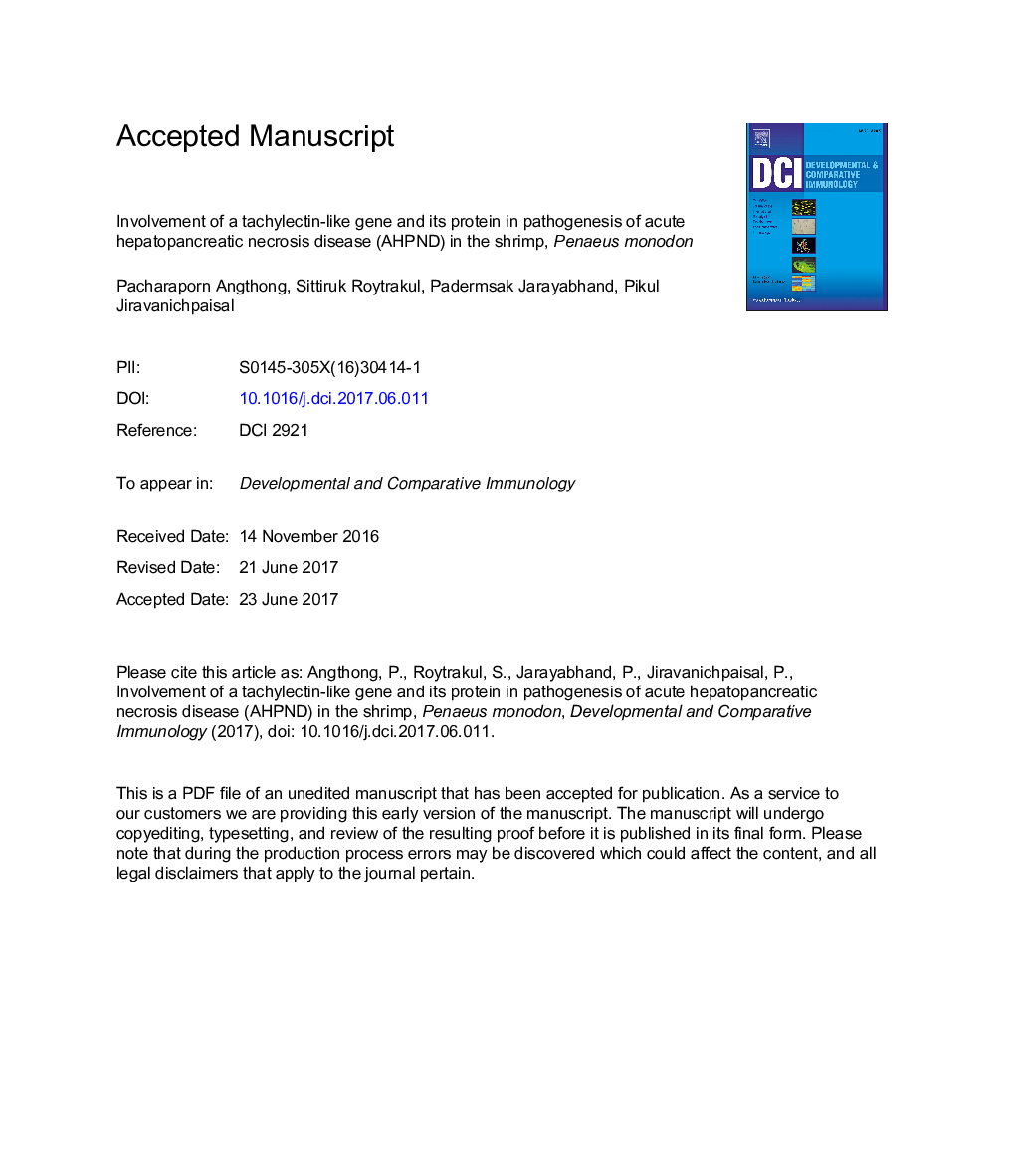| کد مقاله | کد نشریه | سال انتشار | مقاله انگلیسی | نسخه تمام متن |
|---|---|---|---|---|
| 5540136 | 1553556 | 2017 | 26 صفحه PDF | دانلود رایگان |
عنوان انگلیسی مقاله ISI
Involvement of a tachylectin-like gene and its protein in pathogenesis of acute hepatopancreatic necrosis disease (AHPND) in the shrimp, Penaeus monodon
دانلود مقاله + سفارش ترجمه
دانلود مقاله ISI انگلیسی
رایگان برای ایرانیان
کلمات کلیدی
موضوعات مرتبط
علوم زیستی و بیوفناوری
بیوشیمی، ژنتیک و زیست شناسی مولکولی
زیست شناسی تکاملی
پیش نمایش صفحه اول مقاله

چکیده انگلیسی
A shrimp disease, the so-called acute hepatopancreatic necrosis disease (AHPND) is caused by a specific strain of Vibrio parahaemolyticus (VP) and it has resulted in significant losses to the global shrimp farming industry. In our previous study, three of tachylectin-like genes were cloned and characterized from the intestine of Penaeus monodon, designated as Penlectin5-1 (PL5-1), Penlectin5-2 (PL5-2) and Penlectin5-3 (PL5-3). These three genes all contain fibrinogen-related domain (FReD). The expression level of PL5-1, PL5-2 and PL5-3 was elevated in the stomach after oral administration with AHPND-causing V. parahaemolyticus 3HP (VP3HP). A polyclonal antibody to PL5-2 was successfully produced in a rabbit using the purified recombinant PL5-2 as an immunogen, and this because only the predominant protein PL5-2 could be successfully purified from shrimp plasma by affinity chromatography using a N-Acetyl-d-glucosamine column allowed us to perform functional studies of this lectin. The native purified PL5-2 protein had binding and agglutination activities towards VP3HP. To further understand the functions and the involvements of this lectin in response to AHPND in shrimp, RNAi-mediated knockdown of PL5-1, PL5-2 or PL5-3 was performed prior to an oral administration of VP3HP. As a result, Penlectin5-silencing in shrimp challenged with VP3HP showed higher mortality and resulted in more severe histopathological changes in the hepatopancreas with typical signs of AHPND. These results therefore suggest a role for crustacean fibrinogen-related proteins (FRePs) in innate immune response during the development of AHPND, and maybe also during other infections.
ناشر
Database: Elsevier - ScienceDirect (ساینس دایرکت)
Journal: Developmental & Comparative Immunology - Volume 76, November 2017, Pages 229-237
Journal: Developmental & Comparative Immunology - Volume 76, November 2017, Pages 229-237
نویسندگان
Pacharaporn Angthong, Sittiruk Roytrakul, Padermsak Jarayabhand, Pikul Jiravanichpaisal,